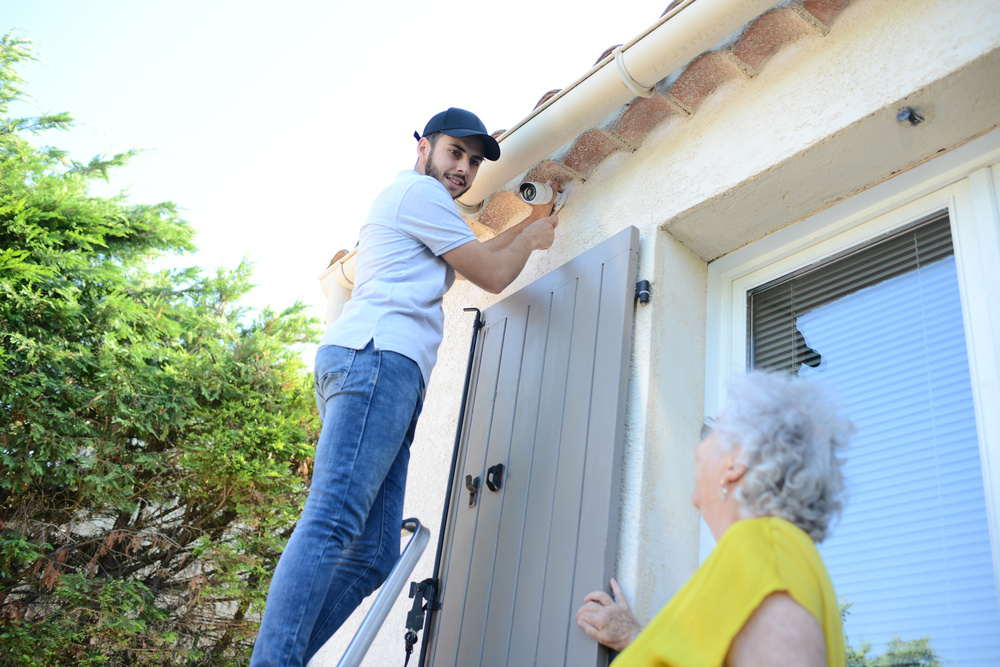Another holiday season has come and gone. Here’s hoping yours was everything you wanted it to be. And if not, here’s hoping that porch piracy was not one of the things that made your holiday season less-than-special. Far too many people are victimized by porch pirates during an annual holiday season that runs from late October through early January.
Vivint Smart Home, a nationwide provider of monitored home security and home automation systems, conducted a survey among 1000 Americans in hopes of discovering their experiences with holiday porch piracy. What they learned was startling.
Some of Vivint’s data is discussed in the next section of this post. As you prepare to read it, think about your own situation. Have you ever been victimized by porch pirates? If so, have you taken any steps to minimize the chances of being victimized again? Unfortunately, a lot of people do not attempt to protect themselves until after the fact.
Some Surprising Numbers
Let’s get right to the Vivint data. Right off the top, 90% of the survey respondents said they worry about home security when traveling during the holiday season. Perhaps they conjure up images of little Kevin McAllister of Home Alone fame. Whether they do or not, their fears are not completely unjustified.
In terms of porch piracy specifically, here are some of the interesting stats from the Vivint survey:
- 80% had at least one package stolen
- 40% lost jewelry
- 31% lost electronics
- 29% lost clothing or apparel
- 28% lost bicycles
- 27% lost sporting goods.
More than half of the survey respondents admitted to having been victimized by porch pirates multiple times over the last year. That would be surprising except for one final stat from the survey: nearly 30% of those who reported being victimized did nothing afterward. They simply accepted that their packages were gone and moved on.
Porch Piracy Is Lucrative
Americans do not simply have to accept porch piracy as an unavoidable reality of life. All crimes are avoidable to a certain extent. Like any other crime, stopping porch piracy begins with understanding its mechanics. For example, why does it occur? There are lots of reasons. The first among them is the fact that it is so lucrative.
Think about one of the gifts you purchased online this past holiday season. How much did you spend on it? Maybe you bought your teenager a new phone valued at $500. A porch pirate could sell that same phone on the street for half the price and still make a killing. Likewise, there is no shortage of customers willing to buy stolen phones that haven’t yet been activated. There is very little risk of getting caught.
Make no mistake about the fact that porch pirates steal first and ask questions later. Their first objective is to get packages off porches. They worry about what is in those packages later. They don’t have to be concerned at the time of the theft because they know the chances of stealing something they can easily sell on the street are high.
Porch Piracy Is Easy
Getting back to why porch piracy occurs, there’s a second reason: it’s an easy crime to commit. It doesn’t take a whole lot of skill or bravery. It does not require a complicated plan and multiple players with individual roles to play. Porch piracy is as basic as it gets. You drive through a neighborhood looking for vulnerable packages. When you spot one, you simply walk up and take it. Stealing a package takes mere seconds.
Granted, some porch pirates are sophisticated enough to follow delivery trucks through neighborhoods, picking up packages as fast as they are delivered. Some are brazen enough that they make no attempt to hide their faces despite knowing that their actions might be monitored by a video doorbell or exterior video camera.
Porch Piracy Is Relatively Safe
In addition to being lucrative and easy, porch piracy is a comparatively low-risk crime. It is a lot safer to steal packages off porches than actually break into homes and businesses. And if there is one thing all criminals have in common, it is the desire to minimize risk.
Criminals prefer to do what they do as quickly as possible. It might take up to five minutes to pull off a successful home burglary. A porch pirate can be just as successful in under 30 seconds. And depending on the contents of a given package, a porch pirate’s activities might be more profitable than a burglar’s.
Consumers Can Fight Back
It was earlier stated in this post that we don’t have to merely accept porch piracy as an avoidable fact of life. We can fight back. The key to winning the war against porch pirates is making the crime as difficult as possible to pull off. And yes, that requires effort.
Here are just some ways to fight back:
- Neighbor Delivery – Neighbors can work together to have packages delivered to one another’s homes when necessary. If you and your neighbor work opposite shifts, there is a perfect arrangement just waiting to be made.
- Remote Delivery – Many of the biggest delivery services now offer remote delivery. Packages are delivered to secure lock boxes located in public places. Consumers are given digital codes to unlock the boxes when they go to pick their packages up.
- Home Boxes – Speaking of lock boxes, home models are available as well. A homeowner can purchase and install a lock box on the front porch.
- Controlled Entry – Yet another strategy is to install a smart lock with remote access to facilitate controlled entry. When a delivery driver arrives, you use your phone to let him in the house. He leaves the packages by the door, and you lock things back up as he leaves.
Porch pirates count on consumers not making the effort to stop them. Over the past year, they have had plenty of opportunities to do so. Here’s hoping you weren’t a victim of porch piracy during the recent holidays. If you were, don’t let it happen again.

